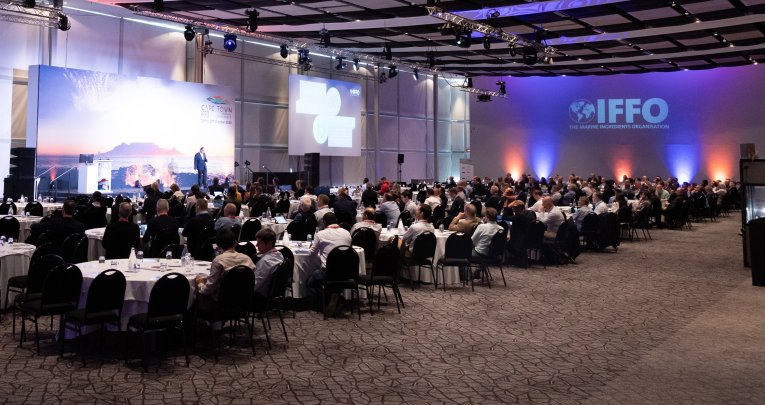
The marine ingredients industry has once again united for IFFO’s Annual Conference, this year held in Cape Town with 395 delegates attending from 39 countries.
Across three days, the agenda features key players from both marine ingredients and related industries, discussing market trends and wider opportunities and challenges. Delving further into the strategic use of marine ingredients, technical experts explore precision nutrition, feed footprints, traceability as well as market trends.
Leading the responsible development of marine ingredients
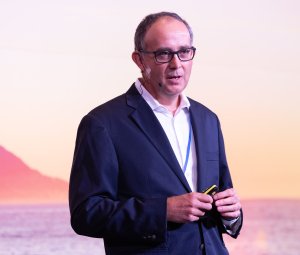 According to IFFO’s President Gonzalo de Romaña, “we have a responsibility to progress our industry further and help people understand how we contribute to global nutrition.”
According to IFFO’s President Gonzalo de Romaña, “we have a responsibility to progress our industry further and help people understand how we contribute to global nutrition.”
IFFO is a founding member of the Global Roundtable on Marine Ingredients, a platform where players from our industry, from the feed industry, NGOs, and certification standards work together in areas where improvements are needed, with the goal to fill in knowledge gaps and drive positive changes through market pressure. This initiative is also a powerful tool to drive the industry out of its comfort zone. It is important to acknowledge the gaps between our global standards and some practices in certain regions.
Marine ingredients are setting the sustainability agenda
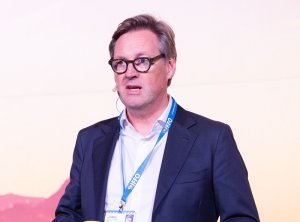 “Undoubtedly”, IFFO’s Director General, Petter Martin Johannessen, said, “the story around feed ingredients has very much been a story about volumes. With 40 million tonnes of additional volumes of feed ingredients needed by 2030, no replacement is happening. Supplementation is happening. Now, there is a need to set the sustainability agenda. We are setting it. Because a value chain approach to sustainability is critical to long term business success, resilience and the industry’s licence to operate. Customers, consumers, investors and civil society organisations will hold us responsible for any ESG discrepancies across the marine ingredients value chain, even if these originate from one of our suppliers.”
“Undoubtedly”, IFFO’s Director General, Petter Martin Johannessen, said, “the story around feed ingredients has very much been a story about volumes. With 40 million tonnes of additional volumes of feed ingredients needed by 2030, no replacement is happening. Supplementation is happening. Now, there is a need to set the sustainability agenda. We are setting it. Because a value chain approach to sustainability is critical to long term business success, resilience and the industry’s licence to operate. Customers, consumers, investors and civil society organisations will hold us responsible for any ESG discrepancies across the marine ingredients value chain, even if these originate from one of our suppliers.”
Africa in a complex world
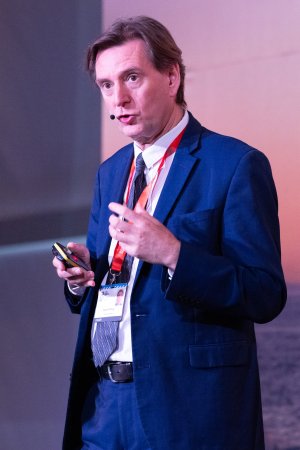 “The pandemic taught us to expect the unexpected and we need to be braced for more events, but being braced does not mean that we are prepared” the Africa Editor from the Financial Times David Pilling stated. Africa plays and will play a bigger role in global economy that people imagine. The challenge for Africa is to create value for the people living in this continent. However, there is a lot of diversity on this continent: "Africa is not a country!"
“The pandemic taught us to expect the unexpected and we need to be braced for more events, but being braced does not mean that we are prepared” the Africa Editor from the Financial Times David Pilling stated. Africa plays and will play a bigger role in global economy that people imagine. The challenge for Africa is to create value for the people living in this continent. However, there is a lot of diversity on this continent: "Africa is not a country!"
Nineteen is the middle age in Africa, 44 in Europe. According to Swedish physician and statistician, Hans Rosling, the “pin code” of the world was 1114 in 2013: 1 billion people in the Americas, 1 in Europe, 1 in Africa and 4 billion people in Asia. In 2030 it is expected to be 1125, with the Americas and Europe having stopped growing, Africa having doubled, and Asia added a billion. By 2050, one out of 4 of world’s population will be African. By 2100, the world’s centre of gravity may have shifted from the Atlantic to the Indian ocean.
Feeding the world with aquatic foods
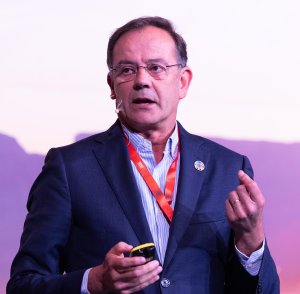 With almost 800 million people currently undernourished today, aquatic foods will play a critical role in reducing world hunger. In the last decade the consumption of aquatic foods has grown at twice the rate of population growth, thus making net contributions to the nutrition of the human population. This growth has been possible thanks to aquaculture, the fastest growing food production industry in the last 50 years, bringing per capita consumption of aquatic foods (excluding algae) to 20.5 kg/year. Manuel Barange, FAO’s Assistant Director General and Director of the Fisheries and Aquaculture Division highlighted FAO’s estimates that production of aquatic foods over the 2020s will not be sufficient to compensate for population growth in Africa, and as a result, per capita consumption of aquatic foods may decline. “FAO has developed a Blue Transformation strategy to address this growing problem, promoting sustainable aquaculture growth, ensuring all fisheries are placed under effective management and developing the value chains of aquatic foods”. The target is to achieve 35% growth in global aquaculture by 2030 with quality foods that are produced sustainably. A hundred percent of marine and inland fisheries should be placed under effective management to produce Maximum Sustainable Yields. The last objective is to upgrade value chains to ensure the social, economic and environmental viability of aquatic food systems; with the target of increasing and more inclusive returns from aquatic foods, by halving loss and waste, more transparency and traceability, better market access, and more consumer awareness.
With almost 800 million people currently undernourished today, aquatic foods will play a critical role in reducing world hunger. In the last decade the consumption of aquatic foods has grown at twice the rate of population growth, thus making net contributions to the nutrition of the human population. This growth has been possible thanks to aquaculture, the fastest growing food production industry in the last 50 years, bringing per capita consumption of aquatic foods (excluding algae) to 20.5 kg/year. Manuel Barange, FAO’s Assistant Director General and Director of the Fisheries and Aquaculture Division highlighted FAO’s estimates that production of aquatic foods over the 2020s will not be sufficient to compensate for population growth in Africa, and as a result, per capita consumption of aquatic foods may decline. “FAO has developed a Blue Transformation strategy to address this growing problem, promoting sustainable aquaculture growth, ensuring all fisheries are placed under effective management and developing the value chains of aquatic foods”. The target is to achieve 35% growth in global aquaculture by 2030 with quality foods that are produced sustainably. A hundred percent of marine and inland fisheries should be placed under effective management to produce Maximum Sustainable Yields. The last objective is to upgrade value chains to ensure the social, economic and environmental viability of aquatic food systems; with the target of increasing and more inclusive returns from aquatic foods, by halving loss and waste, more transparency and traceability, better market access, and more consumer awareness.
“It is not just focusing on growth; fisheries need to be managed and an example where this is not being done is in West Africa. The public and society will judge the industry and we need to ensure that the fisheries in this area are sustainably managed.”
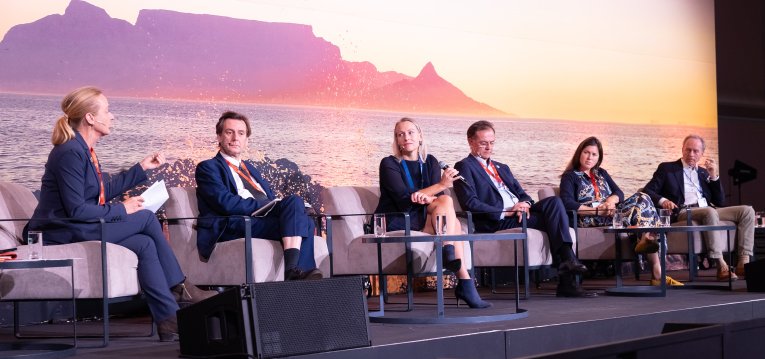
Communicating the positive story around blue foods
Food systems keep evolving. So do consumers’ expectations. Information is getting easier to access. Throughout a panel discussion about the role of marine ingredients in future global food systems, featuring Manuel Barange, David Pilling, Katherine Bryar (Biomar and Fed by Blue) and Elizabeth Beall (FinanceEarth), moderated by Melanie Siggs, panellists agreed on a shared responsibility to ensure traceability, make information easier to understand and communication a key priority.
“Within the marine ingredients industry, we have all contributed fantastically to the sustainable use of resources that principally humans do not eat, including trimmings which enable other usage of this fantastic material. These unique fantastic ingredients have a huge potential for different markets; even fishmeal is not just protein. IFFO is continuously working for the industry to be more sustainable and encouraging those regions who are trying to be more sustainable to keep improving”, Pelagia AS CEO Egil Magne Haugstad highlighted.
“We know that fish eat fish, you need to tell this story” Katherine Bryar insisted: BioMar sources nutrients and not ingredients; with the scarcity of marine ingredients, the company has diversified the sources of these nutrients. In order to avoid increasing capture and meet the growing demand from aquaculture, marine ingredient inclusion needs to reduce. “If it was possible, the farmers of carnivorous fish would just use marine ingredients, but this isn’t possible, so we need to adapt. Consumers believe that the oceans are overfished.”
However, two out of three fisheries are not overfished (FAO). “The most valuable fisheries, with a larger volume of production, tend to be well managed, and this is because the investment to improve management is worth it. There will always be a bad story, we need to celebrate success and help those who fall behind, which tend to be those that are of lower value” Manuel Barange insisted. Land in Africa is not an issue so there is huge potential for aquaculture, but it needs to be efficient and dynamic. Marine ingredients should be used in a targeted way, such as in broodstock and hatcheries.
What are the tools that will help amplify marine ingredients? “MarinTrust and The Global Dialogue on Seafood Traceability (GDST) are providing some of these tools and they now need to be integrated into the industry” according to Elizabeth Beall. There are costs of this change, ranging from reducing by-catch and worker. Another tool in the box is certification. BioMar chooses to only accept certified marine ingredients as farmers and retailers are asking for it, but with only 50% certified globally, the industry has still got a long way to go. Bryar called for more Fishery Improvement Projects (FIPs) in the developing world (especially in Africa and Asia) to increase access to responsibly sourced marine ingredients: “Along with certification, we also need verification, using data software to verify source. Step one is certification and it is spreading across all markets”.
Regarding Africa, David Pilling recommended that focus be on reducing exports, and building aquaculture systems to create jobs, value and nutrition. It comes down to recognizing this opportunity and squeezing as much as you can out of fishery resources is low hanging fruit. “Countries need to recognize aquatic foods in their nutritional strategies, understanding their role in combating hunger and achieving the SDGs” Barange concluded.









